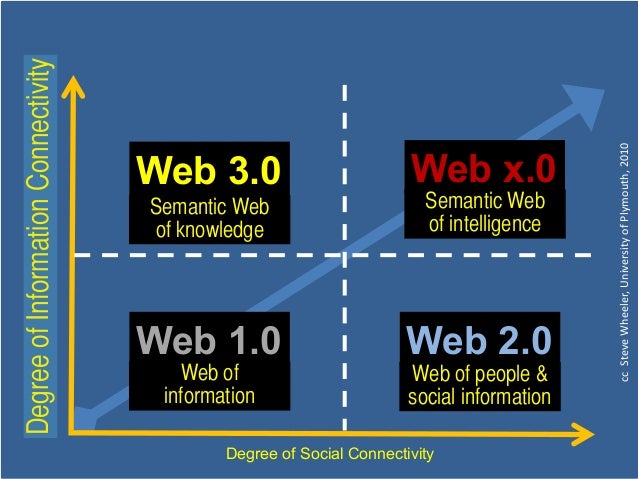The Evolution of The Web
Tim Berners-Lee, who launched the world wide web in 1989, wanted to change the way we used information and how we worked together. Berners-Lee wanted a global resource that would allow people to access information. In its beginning, the web, referred to as Web 1.0, was known as a read only web. In other words, the consumer was limited to only reading information presented on a website. Since these static websites do not permit interaction or communication, it is difficult to discuss the credibility of information or to present different points of views.
To allow for communication and interaction new tools needed to be developed. In 1999, a company called Blogger was started which helped usher in Web 2.0. Over time more social networking tools were developed (i.e. facebook, youtube, twitter, etc.) which allowed the user to read, write and publish. This allows the consumer to become active and share feedback with the creator of information. As this interaction occurs communication, collaboration and creativity increases. The problem that has users now face is that there is so much information available that it is difficult for consumers to sift through all the data in order to find appropriate content.
Berners-Lee's new vision for the web is to have individuals put data onto the net. His vision is that as more data is placed on the web it becomes linked to other data because machines will be able to read the data and link it to other sources. In Web 3.0. the user will be able to do a search that will start in one data base and then move through other data bases which are connected or related to the search. According to Berners-Lee, the information you get back is data with relationships to other data. As a result, the linked data will come from diverse sources giving the consumer a better understanding of the content.
The following youtube video by Kate Ray, gives an overview of Web3.0.
Web 3.0 and Education
As Web 3.0 and linked data is created, students will be able to absorb more information and spend greater time analyzing this data. While researching Web 3.0,I came across Gapminder, which shows the important world important trends. It is a data bass, that has collected and organized data so that it can be understood by it's consumers. Under the For Teachers page, there is an example of how data with relationships can be used in a classroom to discuss world trends. The conversations are meaningful as students are able to analyze the data and share their thoughts on what the data tells them. By linking to this, students are getting real world information and discuss real world issues.
With the linked data of Web 3.0, teachers will be able to fully assess students according to Ontario Curriculum Achievement Charts. Much of what is assessed is the student's knowledge and understanding. As the content or data is made available, teachers can go deeper into the achievement chart and assess thinking, communication and application of skills. Teachers will no longer be feeding information to students and asking for them to restate it. Students will work with data to come to their own conclusions thus emergence of a 21st Century critical thinker.
As I was researching the evolution of the web, I became aware changes that have occurred overtime. However, while we live day to day this changes are sometimes overlooked until we are made aware of these changes and reflect on how these changes ca affect our teaching. I was wondering, as leaders, how often do we make other team members aware of the changing trends in education?

Yep...this is my favourite post! Interact, links out, strong reflection, confident and even some vulnerability...with engagement and encouragement to your reader to join in the discussion. Web 3.0 is still very hard for people to grasp and rarely do we teach this to students. I wonder, after doing the research that you've done, would you include this in any of your data management or other math activities?
ReplyDeleteCurrently I do not teach math. However, when I did, I always looked for ways to bring in real world data into the classroom. This is something that is more meaningful and opens up the students to new ideas and discussions. Do you think linking students to real world data is engaging or might it overwhelm students?
ReplyDelete